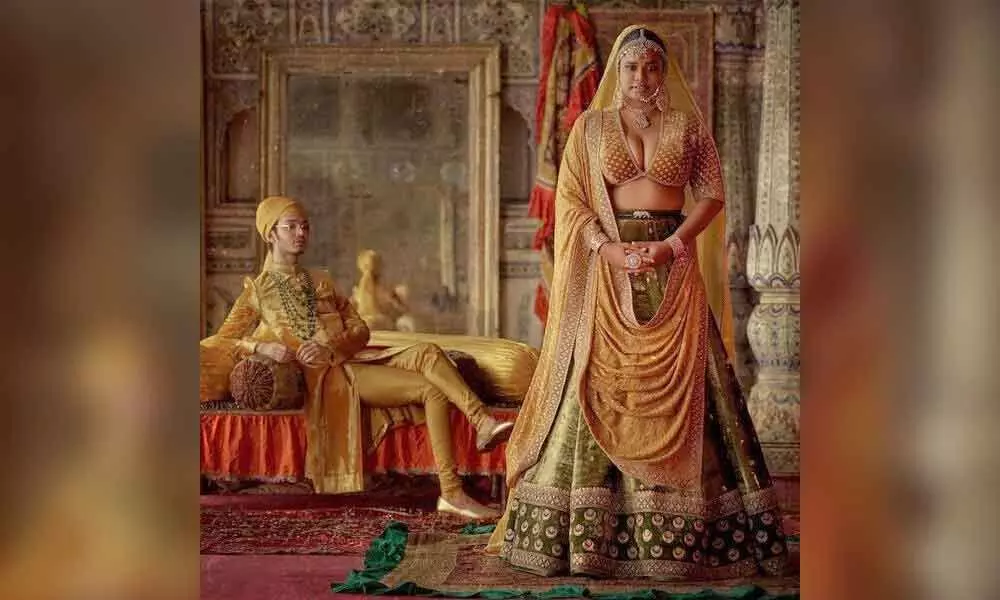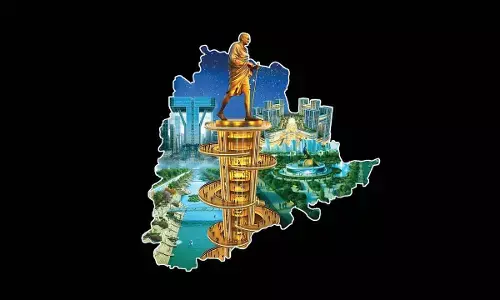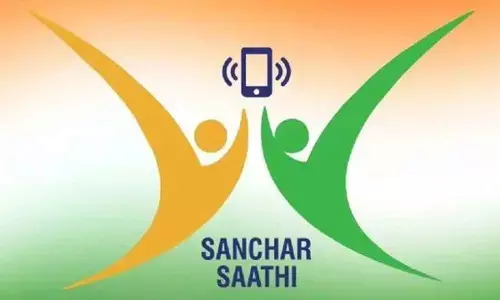Inclusive diversity : Diversity of body types has come to be the new normal

Leading designer Sabyasachi Mukherjee’s recent campaign made a strong social statement by featuring a ‘curvy’ model along side the regular ones.
Leading designer Sabyasachi Mukherjee's recent campaign made a strong social statement by featuring a 'curvy' model along side the regular ones.
The fact that it drew attention and led to comments and a discussion, reflects how much the Indian fashion industry lacks in body shape inclusivity.
The discourse is not new. Unreal body measurements projecting an ideal body type in fashion advertising has been getting flak from "anti-body shaming activists" for some time now.
It is not as if a single, idealised version of the beautiful body has prevailed forever. Curvaceous bodies were 'in' during the 19th century. But then followed the slender, elegant forms of the early 20th century.
By the 1960s, 'the look' in fashion was the lanky and leggy look of Twiggy and Veruschka, which by the 1990's morphed into the 'waif -heroin chic' of Kate Moss.
Even as the colluding businesses of weight loss diets, foods, pills and wellness spin doctors boomed, concern over eating- disorders and reported drug abuse spiralled.
A public outcry and a push for media representation of diverse body types followed. Fashion houses in the US and Europe were reportedly advised to use models over a certain minimum Body Mass Index (BMI).
France actually went ahead and banned the hiring of under-weight models and models under the age of 16 in 2015.
Till the 1980s, 'plus size' was the generic code for all sizes above 14. It was a boutique activity, tucked away in obscure portions of a store.
Dedicated stores for "plus sizes" catered primarily to value for money options with limited, utilitarian styling.
The new millennium changed all that. Plus-sized customers discovered market power when they found a collective voice. They had the money to spend, they had the same aspirations, desires and lifestyles as their skinny counterparts and were looking for "brands that defined beauty and style by individualism and confidence and not by size and weight" as per Daphne Howland, a journalist with Retail Dive.
Social media, Instagram, blogosphere and Youtube gave currency and reach to the movement. Plus-sized models acquired new visibility and stardom.
In the US, they began appearing on magazine covers, walking the runway, starring in films and on TV. There was even a hugely popular Plus Size Fashion Week with its own super models, celebrity and star line-up. Today, there is a host of plus-sized achievers and role models to look up to as body positive champions.
"Millennial and Gen Z shoppers want to feel a connection to a brand, and this is hard to do when the models wearing the clothing only represent a small segment of the buying group," says Michael Felice, principal in the consumer and retail practice of global strategy and management consulting firm A.T. Kearney.
Varshita Thatavarthi, curve model for designer Sabyasahi Mukherjee
The profitability of catering to the sartorial needs of the 'real sized' women has ensured a change in business practices promoting fashion as a size-independent commodity.
In India, retailers such as Pantaloons, Biba, Mustard and online fashion retailers like Myntra recognised this and introduced plus-sized clothing.
"The plus size segment is a latent market that offers a huge opportunity," said Ganesh Subramanian, Head - New Initiatives at Myntra.com. But it's not just the fashion world, which is acknowledging body diversity as beautiful.
This year's Old World Theatre Festival at the India Habitat Centre had Shabari Rao, director of Head to Head confronting this issue head on, to much audience acclaim, by challenging the perception of your identity being limited by your size and appearance.
In art, theatre, cinema as in fashion, diversity of body types, is the new normal.
The fashion industry in India has been quick to synchronise with the International trend and we can be sure to see a rise in fashion shows and advertorials making a concerted effort at championing inclusive diversity from diverse shapes and sizes, to skin tones, ethnicity and abilities.
A welcome step towards the acceptance, more generally, that diversity, far from being a handicap is an opportunity for everyone to explore and realise their own potential.




















